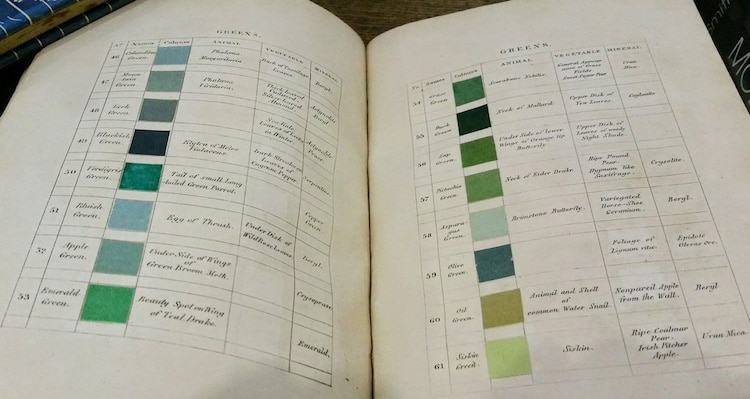
This post may contain affiliate links. If you make a purchase, My Modern Met may earn an affiliate commission. Please read our disclosure for more info.
Today, many color-loving creatives aim to illustrate and identify tones found in the natural world. From landscape-based color palettes to real-world Pantone matches, these polychromatic pieces sort and specify the colors that surrounds us. While new technologies have made this task easier than ever, the practice has been popular for centuries, with Abraham Gottlob Werner’s 19th-century book, Nomenclature of Colours, as an extraordinary example.
Nomenclature of Colours served as a must-have reference for artists, scientists, naturalists, and anthropologists alike. The exquisitely rendered guide showcases the earth’s rich range of color by separating it into specific tones. Illustrated only by a small swatch, each handwritten entry is accompanied by a flowery name (like “Arterial Blood Red” and “Velvet Black”) as well as an identifying number. What the book is truly known for, however, is its poetic descriptions of where each tone can be found in nature.
Did you know, for example, that in addition to its namesake, “Apple Green” is evident on the “underside of [the] wings of [the] Green Broom moth”? And “Prussian Blue”—a pigment still popular in paint sets today—composes the “beauty spot on [the] wing of [the] mallard duck”? With these notes, naturalists and other curious observers of the past were able to study their surroundings like never before.
Werner’s Nomenclature of Colours was created by German mineralogist Abraham Gottlob Werner, Scottish painter Patrick Syme, and Scottish naturalist Robert Jameson in 1814. While it has been used by people in an array of professions and fields, it has resonated most strongly as a scientific tool, with naturalist Charles Darwin as perhaps its most renowned reader.
While Werner’s Nomenclature of Colours may seem like a relic of the past, Smithsonian Books has recently opted to re-publish the beloved work. So, if you’d like a polychromatic peek into history, be sure to pre-order your own pocket-sized copy from Amazon.
Werner’s Nomenclature of Colours is a 19th-century color guide that describes where you can find certain tones in nature.
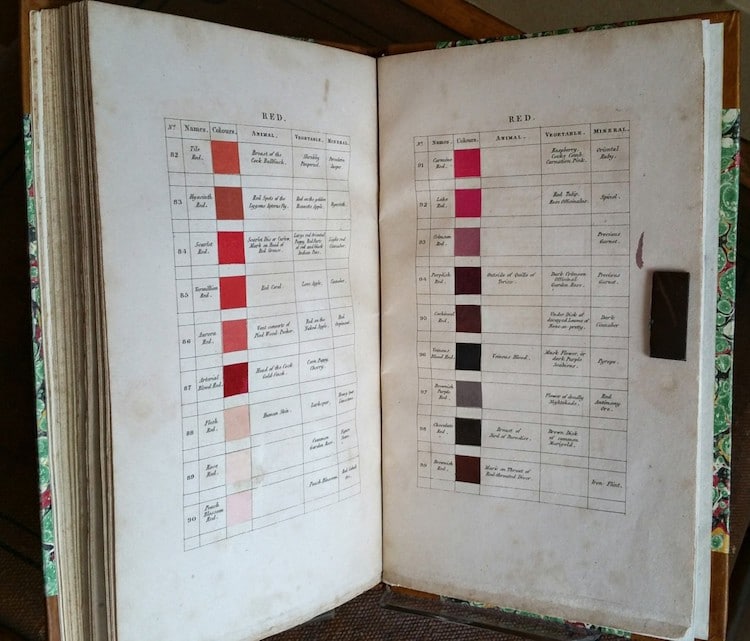
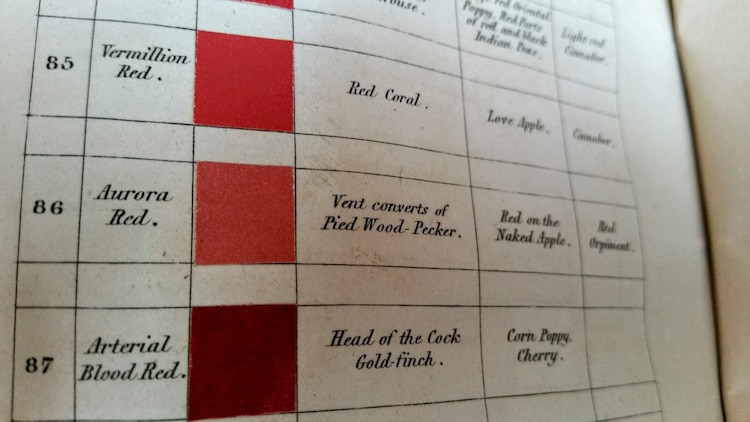
The natural specimens included in the color descriptions are animals, vegetables, and minerals.
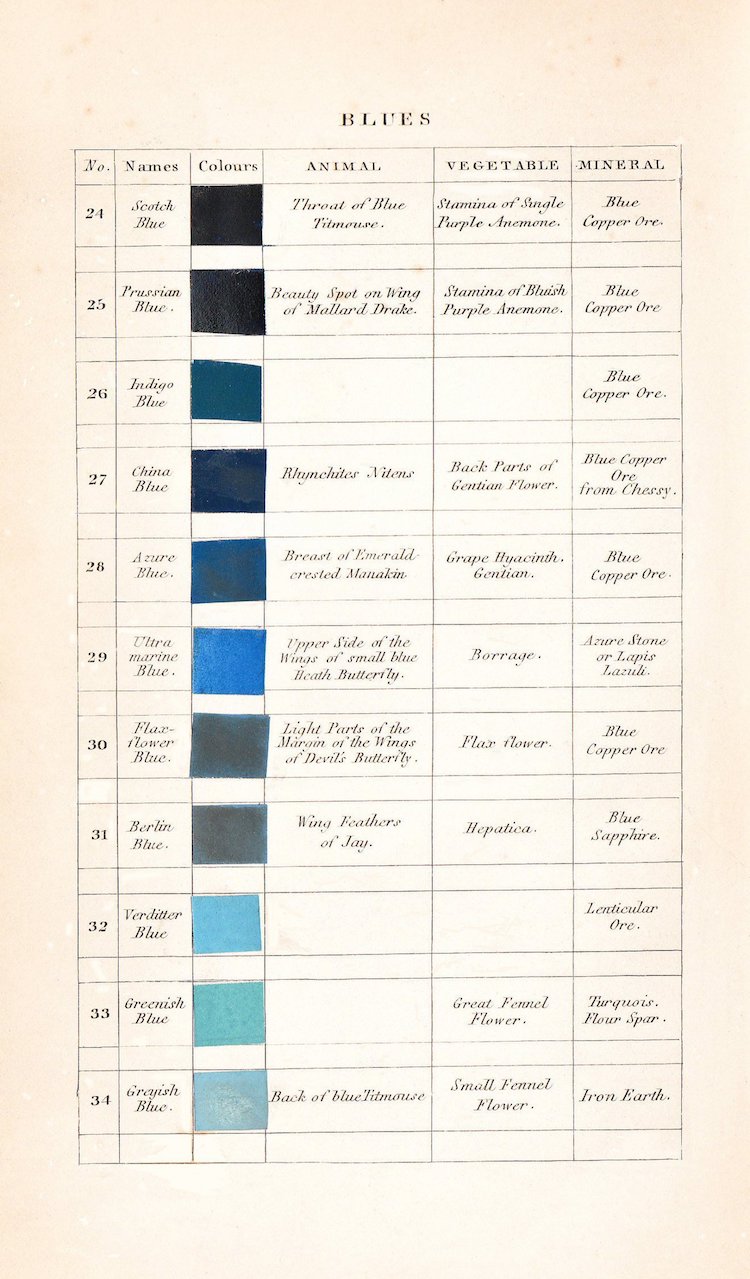
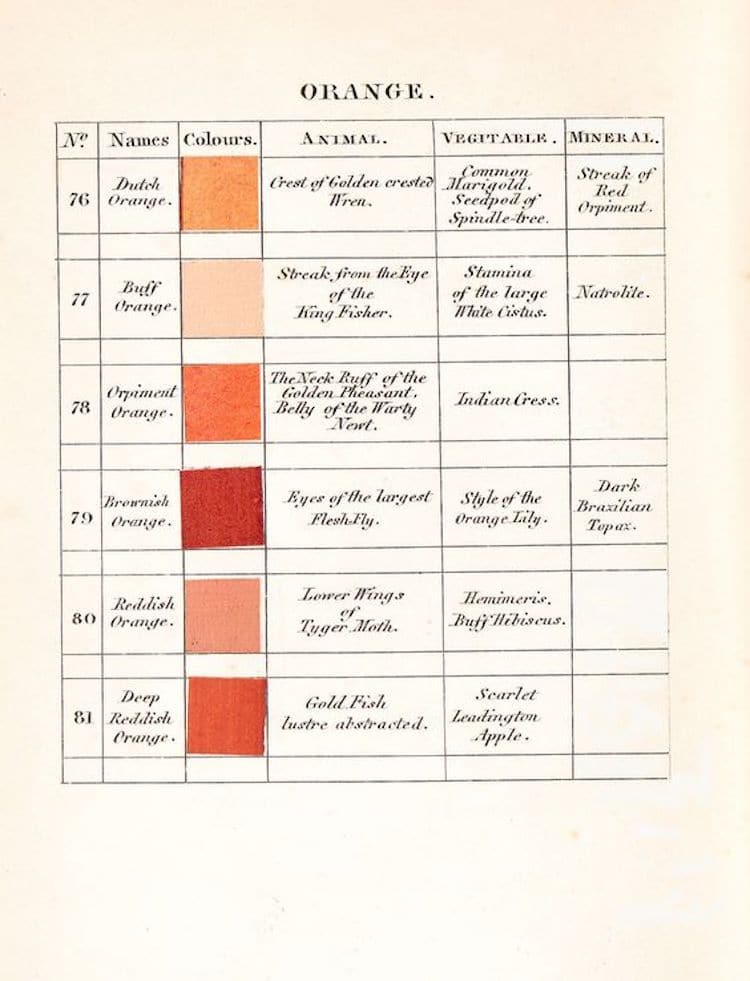
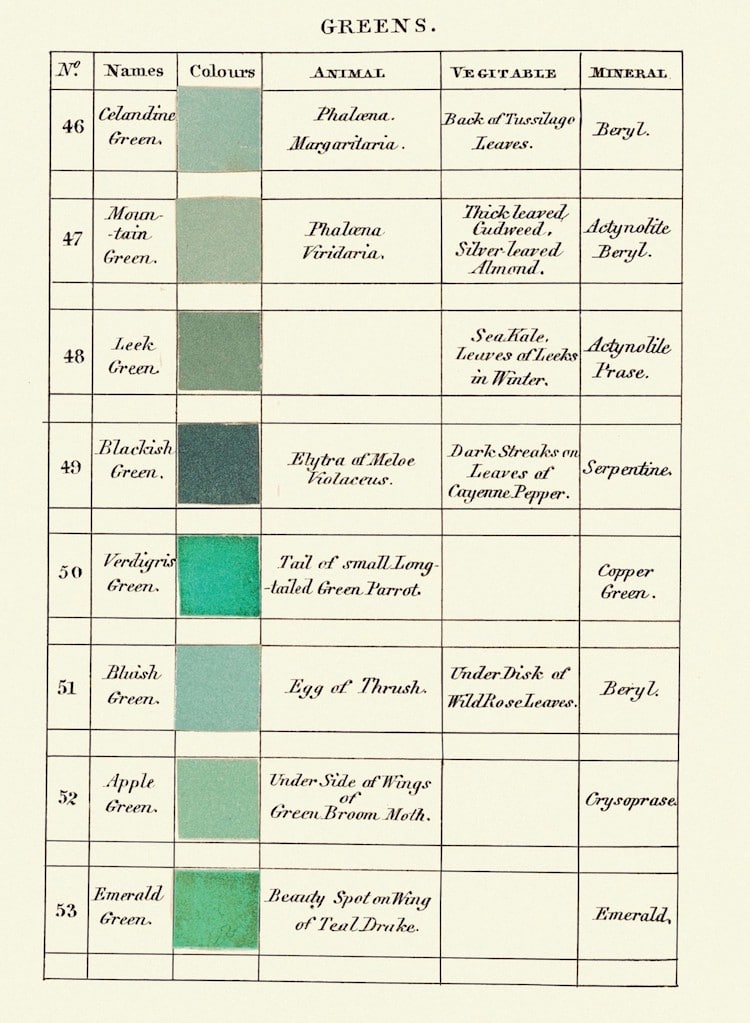
Each hue is also illustrated by a small swatch and a poetic name.
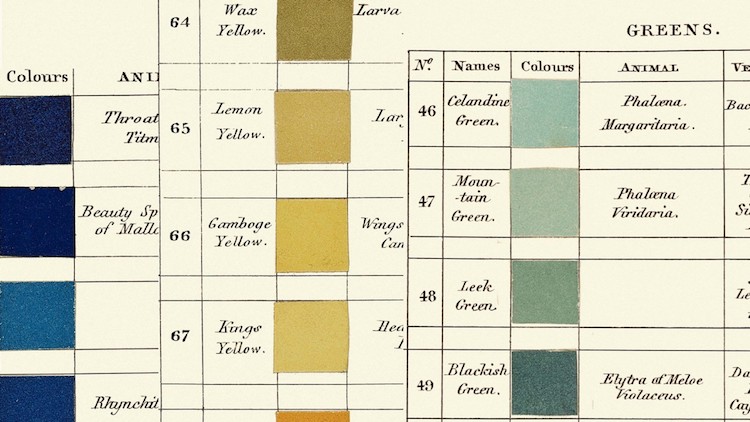
You can pick up a pocket-sized copy of this beloved book on Amazon!
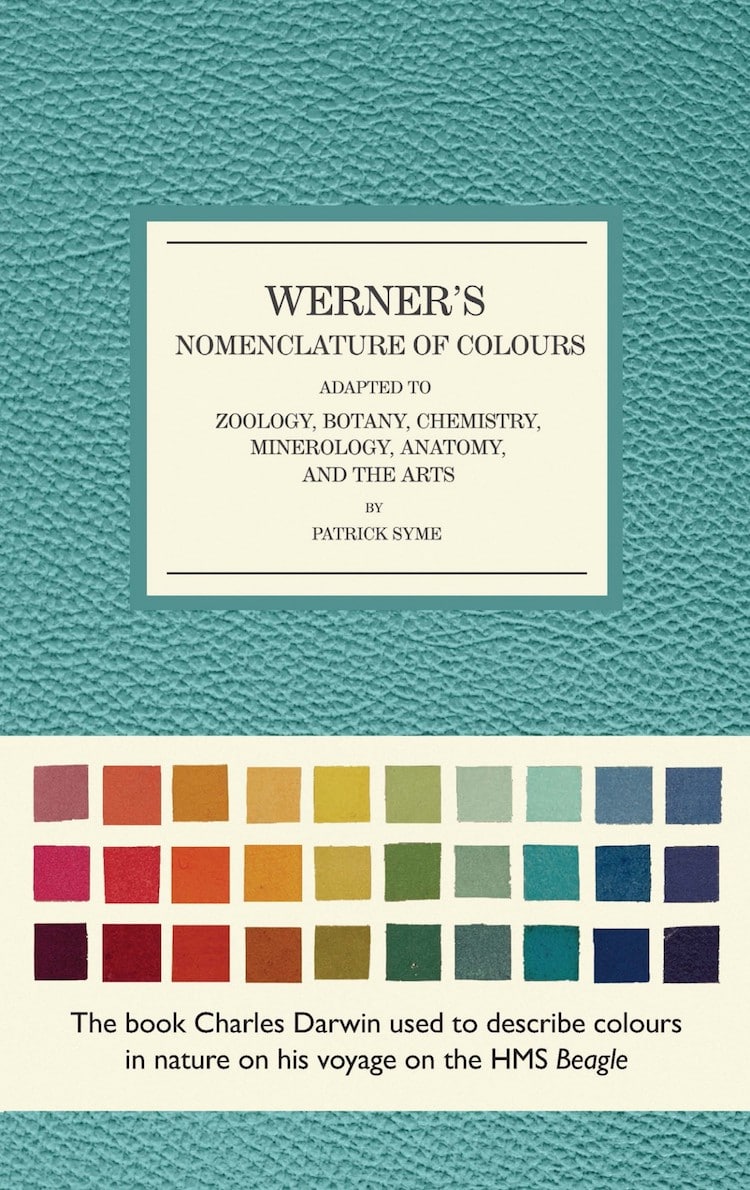
h/t: [Colossal, Co. Design]
All images via Smithsonian Books.
Related Articles:
19th Century Biologist’s Illustrations of Microbes Bring Art and Science Together
Biodiversity Heritage Library Puts 2 Million Botanical Illustrations Online for Free
Photographer Captures the Colors of Nature to Create ‘Encyclopedia of Rainbows’

You must be logged in to post a comment.